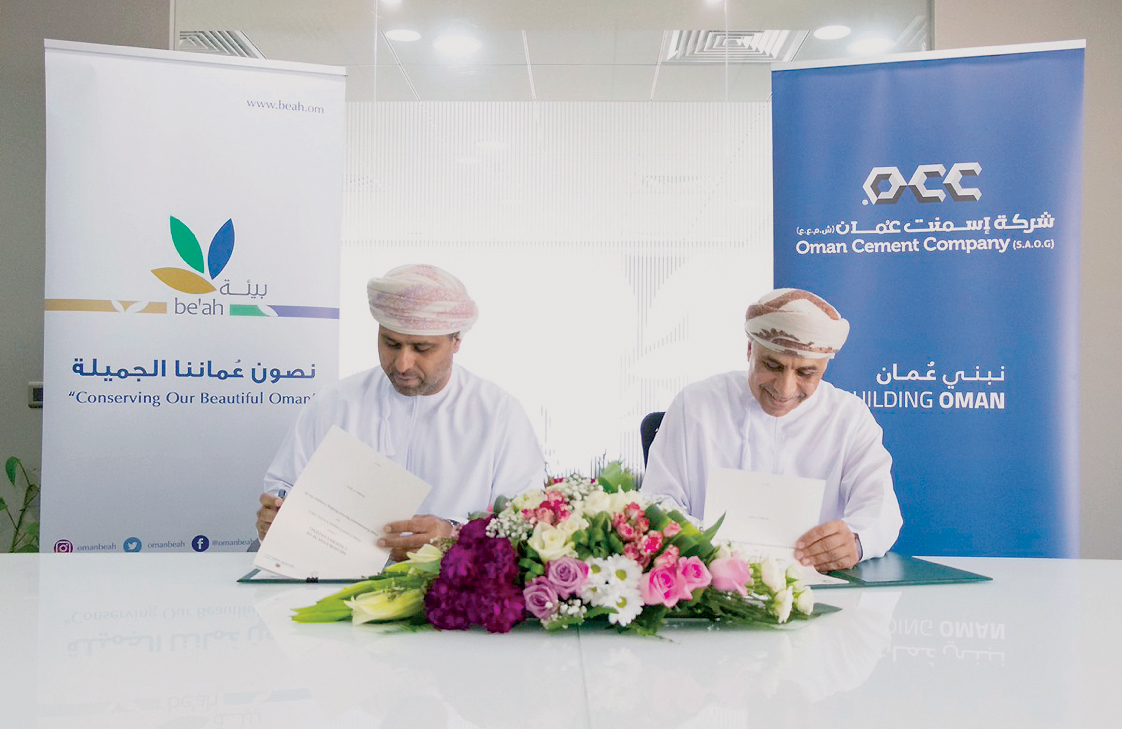

MUSCAT, OCT 7 - Oman Environmental Services Holding Company (be’ah), the wholly government-owned solid waste management flagship, has struck a deal with Oman Cement Company (OCC) designed to help rid the country of the mountains of scrap automotive tyres stockpiled at key locations around the Sultanate. Under a Memorandum of Understanding (MoU) signed by be’ah with majority government-owned Oman Cement last week, the two sides will explore options for utilising ‘End-of-Life Tyres (ELT) as a fuel resource in cement kilns.
“The main highlight of the MoU is to agree on the scope of collaboration between be’ah and Oman Cement to utilise used tyres from be’ah landfills as an alternative fuel (along with natural gas and coal) in OCC’s kilns to produce cement,” said be’ah in a tweet posted on the weekend. The initiative, it further noted, would help reduce the risk of fires – and the attendant pollution – associated with the massive quantities of scrap tyres accumulating over the decades at certain landfills around the Sultanate. Besides, the move is also designed to aid key industries diversify their energy mix and thereby secure their long-term energy requirements.
Around 45,000 tonnes of so-called ‘end-of-life’ (ELT) tyres are generated every year in the Sultanate — a figure that is projected to rise in line with population growth and urbanisation. For want of environmentally safe ways of disposing of this waste, these tyres have been piling up at two major dumpsites. The biggest is in Dhofar Governorate where several millions of waste tyres are currently being amassed. Last year, be’ah invited proposals offering “innovative” solutions for the recycling and safe disposal of Oman’s scrap tyre stockpiles, which it deemed a potential fire hazard, as well as a threat to groundwater resources.
According to experts, waste tyres are widely used as a fuel resource in cement kilns in a number of countries around the world, either as the primary fuel or in combination with natural gas and coal. Once stripped of their metal reinforcements, such as wires, the waste tyres are then shredded into chips, known as ‘Tyre Derived Fuel’ (TDF). These chips are typically used in high heat operations, such as cement kilns, waste-to-energy schemes, and power plants.
Waste tyres, it is pointed out, produce almost the same energy as petroleum products and around 25 per cent more energy than coal. Furthermore, TDF is cheaper than coal, and has consistent fuel properties. Oman Cement’s complex in Al Rusayl comprises three kilns and five cement mills, collectively offering a combined capacity of 3.6 million metric tonnes per annum.
Conrad Prabhu
Oman Observer is now on the WhatsApp channel. Click here



